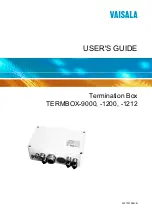
Industrial Ethernet Switch User Manual
3onedata proprietary and confidential
32
Copyright © 3onedata Co., Ltd.
due for example to differences in default timer settings. The IEEE encourages
vendors to provide a "Protocol Implementation Conformance Statement", declaring
which capabilities and options have been implemented, to help users determine
whether different implementations will interwork correctly.
Also, the original Perlman-inspired Spanning Tree Protocol, called DEC STP, is not a
standard and differs from the IEEE version in message format as well as timer
settings. Some bridges implement both the IEEE and the DEC versions of the
Spanning Tree Protocol, but their interworking can create issues for the network
administrator, as illustrated by the problem discussed in an on-line Cisco document.
In 2001, the IEEE introduced Rapid Spanning Tree Protocol (RSTP) as 802.1w.
RSTP provides significantly faster spanning tree convergence after a topology change,
introducing new convergence behaviors and bridge port roles to do this. RSTP was
designed to be backwards-compatible with standard STP.While STP can take 30 to
50 seconds to respond to a topology change, RSTP is typically able to respond to
changes within 3 × Hello times (default: 3 times 2 seconds) or within a few
milliseconds of a physical link failure. The so-called Hello time is an important and
configurable time interval that is used by RSTP for several purposes; its default value
is 2 seconds. Standard IEEE 802.1D-2004 incorporates RSTP and obsoletes the
original STP standard Select RSTP function in rapid ring network interface as follows:
















































